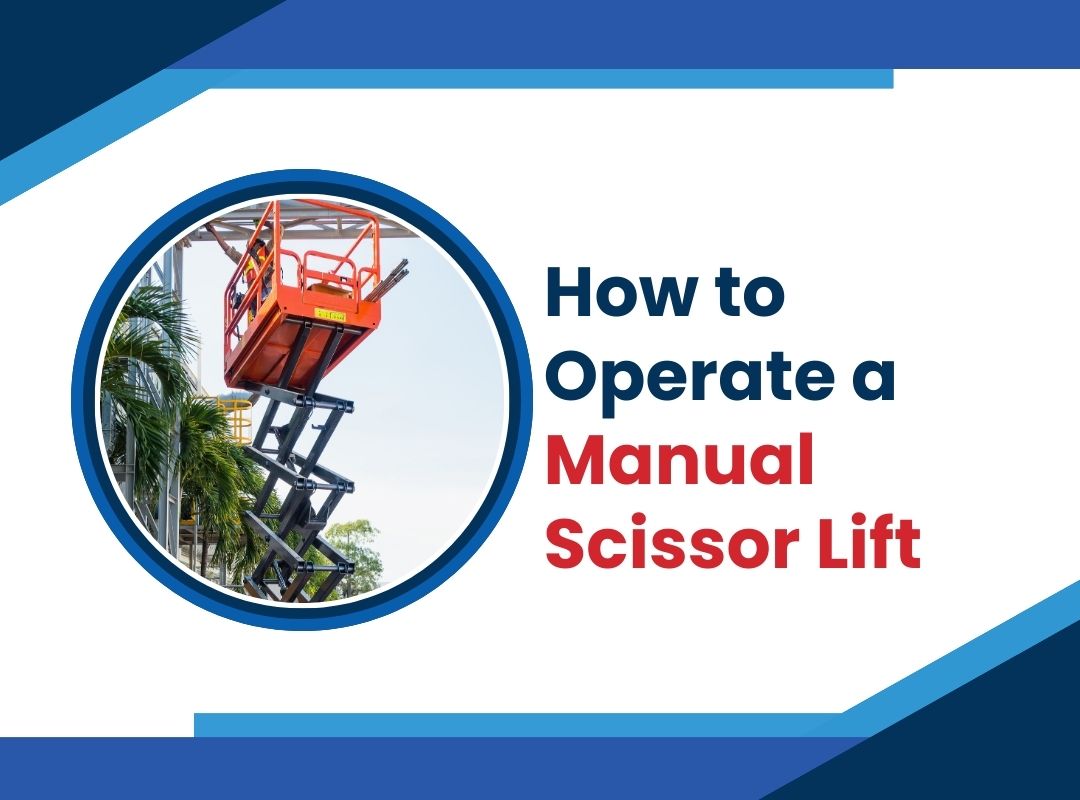If you’re new to the concept of using Manual Scissor Lifts, this article will tell you all about them. The good news is, it’s very easy for someone who is unfamiliar with the contraption to operate it. Scissor lifts are relatively straightforward pieces of machinery, and if you happen to work in construction or a factory, or even onsite at an industrial park, you’ve probably come across them already.
If you’re not familiar with these lifts by name, you’ll recognize them when you see the signature scissor-like cross beams that hold up the platform of the lift. The platform (sizes may vary, depending on what the scissor lift is being used for) is basically used to load, unload, and shift goods, items, and even people. It’s a staple of many industry sites where large goods, huge shipments, or other heavy bits of machinery or items need shifting.
In case you’re still worried about operating a piece of equipment like the manual scissor lift, we can help you out. How it works is quite simple.
How does it Work?
The way a Manual Scissor Lifts Platform functions is via hydraulics. The base of the lift remains at ground level and also has a hydraulic cylinder attached to it, while the ‘scissors’ or legs connect the base to the upper lift or platform, where objects or people can be placed. Once you press the corresponding lever or button, the hydraulic fluid in the reservoir pushes into the cylinder and creates a force that propels the platform upwards. The pressure is maintained by a check valve and is only released when the release valve is activated, so the fluid returns to the reservoir.
As you can see, therefore, operating the machinery is in itself quite simple and doesn’t really require an understanding of any nitty-gritty. You can get both mobile and stable scissor lifts. Mobile ones can be quite useful in circumstances where you might have to move the lift from place to place, such as to clean a ceiling or paint a building. Stable lifts are often mainstays at factories and industrial sites. However, both types are used quite frequently, and you may have seen them around even if you don’t work in fields that employ this kind of machinery. You may also have seen these lifts in car shops or garages, where they might be used to assemble cars or repair car parts.
Is it Safe to Use?
One of the major advantages of the manual scissor lift, aside from how it can boost productivity immeasurably and reduce labor for workers, is in how convenient and reliable it is. As a hydraulic lift, the only real disadvantage is in the fact that the hydraulic fluid is subject to changes in climate or environment. However, many manufacturers have corrected such flaws, so it’s no longer an issue.
On the plus side, the base provides a firm foundation, so all the equipment you load onto the lift is safe and sound. Should you choose to move manpower, this is an effective way to do so as well. Employing a machine like this cuts down on risks and won’t lead to accidents. The height adjustment that is available with regard to the ‘legs’ of the machine also comes in handy, which is why it’s often used in factories to stock inventory. The lifts are also quite durable and don’t require any high maintenance costs.
All in all, whether you’re planning to acquire manual hydraulic scissor lift for your convenience or you’re worried about engaging with a new piece of equipment at work, you can rest assured that these lifts are both effective and safe.


